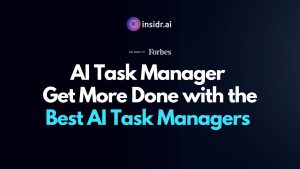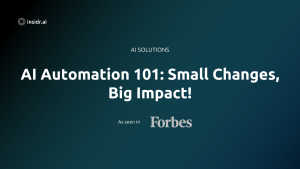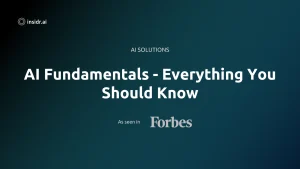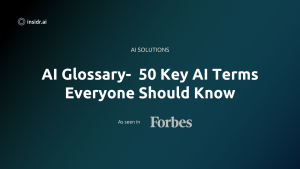
In the ever-evolving landscape of technology, Artificial Intelligence (AI) stands out as a transformative force, reshaping industries and revolutionizing human-machine interactions.
At the heart of this AI revolution lie intelligent agents, a concept that combines the realms of autonomy, decision-making, and automation.
This article embarks on a comprehensive journey through the world of AI agents, uncovering their characteristics, functions, types, and wide-ranging applications.
Introduction: Unveiling the AI Agent
In an era where technological marvels are reshaping the fabric of society, an AI agent emerge as dynamic entities at the forefront of innovation.
An AI agent is an independent program or entity designed to interact with its environment, perceive data through sensors, and take actions using actuators to achieve specific goals.
Simply put, an intelligent robotic agent emulate human-like behavior by sensing, learning element processing, and making decisions, heralding a new era of automation and artificial general intelligence.
Characteristics of an AI Agent
The distinctive characteristics of AI agent set them apart as sophisticated software endowed with artificial intelligence:

The Autonomy Advantage
At the heart of AI agents lies autonomy, enabling them to function independently without constant human intervention.
This autonomy empowers agents to automate tasks, perform complex tasks, and make decisions with agility, freeing human resources for more complex endeavors.
Perception: Sensors as the Eyes and Ears of AI Agent
AI agents perceive their surroundings through sensors, which can range from cameras capturing visual data to microphones capturing audio.
This perception forms the basis for their decision-making, allowing them to react intelligently to changing conditions for the agent.
Reactivity: AI Agent in Action
AI agents, akin to living beings, exhibit reactivity by responding to changes in their environment.
This responsiveness of reactive agents empowers them to take timely actions, making them versatile tools in various scenarios, from manufacturing to healthcare.
Reasoning and Decision-Making: The Logic Behind Choices
Behind the scenes, intelligent robotic agent can engage in reasoning and decision-making processes.
They analyze data, evaluate options, and choose actions that align with their predefined goals, mimicking human thought processes on a digital canvas.
Learning: The Ever-Improving Intelligence
One of the most remarkable aspects of intelligent agents is their ability to learn and adapt over time. Through machine learning techniques, these agents enhance their performance by assimilating new data and refining their decision-making strategies.
An AI agent work as a personal assistant and can execute tasks based on their internal system, computer program, and data structures; same way as the rational agents, proactive agents and software agent.
Communication: Breaking the Barriers
AI agents communicate with other agents or humans through various means, including natural language processing and text-based interactions.
This communication opens doors to multiple possibilities for seamless human-machine collaboration and enhanced user experiences with an agent.
Goal-Oriented: Achieving Objectives with Precision
An AI agent operate with specific tasks and objectives in mind.
By leveraging their autonomy, perception, and decision-making capabilities to create intelligent agents, these agents navigate their environment with a clear focus on achieving predefined goals.
Stay tuned for the next section, where we delve deeper into the types of AI agents and their unique capabilities.
Types of AI Agents: A Spectrum of Capabilities
The realm of AI agent is diverse, offering a spectrum of capabilities to suit various tasks and environments.
Let’s explore five distinct types following characteristics of AI agents, each characterized by its approach to decision-making and problem-solving agent:

Reflex Agents: Rapid Responses
Reflex agents are the quickest thinkers in the artificial intelligence world. They make decisions based on the immediate perception of their environment.
Operating on a simple rule-based system, reflex agents respond to specific events with predefined actions. Think of the reflex agent and other agents as rapid-fire decision-makers, well-suited for scenarios where speed is of the essence.
Model-Based Agents: Enhancing Decision-Making
Model-based agents go beyond reflex actions. These agents possess an internal model of their environment, allowing them to simulate different scenarios before making a decision.
By considering possible consequences, model-based agent exhibit a more rational agent calculated approach to decision-making, making them valuable in complex and uncertain situations.
Goal-Based Agents: Pursuing Objectives
As the name suggests, goal-based agents prioritize objectives. Equipped with an understanding of their environment, these agents make decisions that align with achieving specific goals.
By balancing rational agents’ current states with proactive rational agents’ desired outcomes, goal-based agents exhibit a goal-driven mentality, making them adept at tasks that require a strategic perspective.
Utility-Based Agents: Maximizing Desired Outcomes
Utility-based agents take decision-making to the next level by introducing the concept of utility or value. These agents evaluate various actions based on their potential outcomes and assign utility values to those outcomes.
The agent then selects the action that maximizes the expected utility of rational agent, enabling precise decision-making in scenarios with multiple variables.
Learning Agents: The Path to Continuous Improvement
Learning agents embrace adaptability and improvement. These agents learn from their experiences and interactions with the environment, gradually refining their decision-making processes.
By utilizing feedback mechanisms, the machine learning agent or agents become more knowledgeable and effective over time, making them indispensable in dynamic and evolving environments.
The Architecture of AI Agents
The architecture of AI agents serves as the blueprint for their functioning. It comprises three essential components that work in harmony to achieve autonomous decision-making:
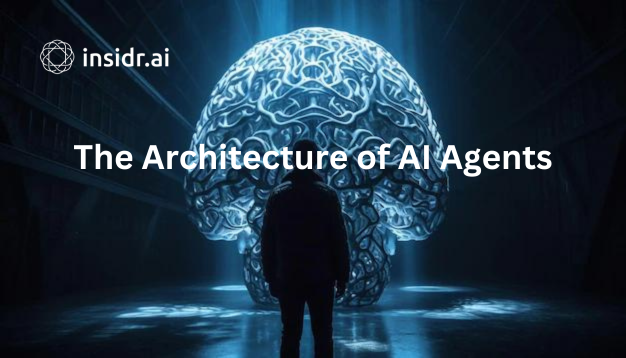
Mapping Perceptions to Actions: The Agent Function
At the core of intelligent agents architecture is the agent function. This function maps the agent’s perception of the environment to the actions it should take.
In essence, robotic the agent function functions that is, it defines the decision-making process that guides the agent’s behavior. The agent function encapsulates the agent’s intelligence, determining how it interprets sensory data and transforms it into actions.
The software agent and AI tools has the learning element and performance element, that means the agent functions improves based on agent’s history, and training data, when the agent executes tasks.
Implementation in Action: The Agent Program
The intelligent agent program is the embodiment of the agent function in code. It is the implementation that translates the logic of decision-making into executable instructions.
The agent program is responsible for processing sensory input, invoking reasoning mechanisms, and orchestrating the human agent itself’s actions. It serves as the bridge between the human agent itself’s cognitive processes and its interactions with the environment.
AI Agents vs. ChatGPT

Numerous sophisticated AI agents, including AutoGPT and BabyAGI, employ the GPT framework. Their central objective revolves around reducing human involvement in the accomplishment of AI tasks.
Expressions like “GPT on a loop” succinctly capture the essence of models like AgentGPT and BabyAGI. The agent engage in iterative processes to enhance comprehension of user prompts and enhance their outputs.
In contrast, AutoGPT takes this pursuit a step further by integrating internet accessibility and code execution functionalities, considerably broadening its scope for addressing complex problem sets.
What is AutoGPT?
AutoGPT is an agent that serves as a highly capable aide capable of independently managing tasks. It harnesses the capabilities of GPT-4 and GPT-3.5, two robust Large Language Models (LLMs), to accomplish tasks without the need for continuous guidance.
Distinguishing itself from conventional models that hinge on specific prompts, AutoGPT devises its own prompts to fulfill objectives. What sets the agent apart is its proficiency beyond pre-fed data; it extends to scouring the web and external resources to curate and sift through genuine information.
How does AutoGPT work?
AutoGPT operates as a recursive AI model, breaking through conventional AI constraints by employing its own outcomes to tackle intricate tasks. Here’s an overview of how the model processes input and delivers pertinent output:
- Assigning Identity and Purpose: Commencing with AutoGPT involves bestowing it with a name and clarifying its intended task. This initial step aids the system in comprehending the objective and subsequently making informed decisions.
- Assimilating Provided Data: AutoGPT embarks on its journey by absorbing the information you provide. It delves into the data to discern its patterns and nuances, thereby enhancing its grasp of the designated task.
- Forging Prompts: Equipped with its newfound knowledge, AutoGPT generates its own prompts tailored to the task at hand. These prompts serve as the bedrock of its decision-making process, guiding its trajectory through the task.
- Independent Data Collection: AutoGPT isn’t limited to the initial dataset. It autonomously scours the internet and other sources to accumulate supplementary information, elevating its comprehension and precision.
- Scrutinizing and Refining Data: The system meticulously scrutinizes the amassed data, assessing its authenticity and relevance. It expunges any inaccurate or substandard information, ensuring the integrity of its knowledge base.
- Perpetual Enhancement: AutoGPT places great emphasis on continuous improvement. It assimilates insights from its generated outcomes and employs feedback to adapt and augment subsequent responses. This perpetual cycle facilitates the system in honing its strategies and progressing over time.
- Crafting the Output: Ultimately, AutoGPT crafts its output grounded in its deliberative process. It amalgamates its acquired knowledge, refined data, and contextual cues to formulate a well-considered and pertinent response to the given task.
AutoGPT emerges as an autonomous problem-solver endowed with astute decision-making prowess. It serves as a testament to the formidable potential of artificial intelligence, offering a glimpse into the realm of intelligent systems adeptly navigating intricate tasks with minimal human operator intervention. Arguably, AutoGPT sets the stage for a future where machines evolve into reliable allies adept at traversing our complex world.
BabyAGI: Another intelligent agent
Now let’s delve into the realm of BabyAGI, a streamlined yet remarkably potent agent. To grasp the extent of BabyAGI’s capabilities, envision a digital project manager that independently generates, organizes, and executes tasks while staying laser-focused on predefined goals.
In a landscape where many AI-powered platforms are confined by their pre-existing knowledge, BabyAGI distinguishes itself by its adaptive nature and its capacity to learn from experiences. It possesses a profound ability to discern feedback and, similar to human learning, base decisions on a process of trial and error.
What sets BabyAGI apart, however, isn’t solely its adaptability; it’s also its prowess in executing code tailored to specific objectives. Its shine is most evident in intricate domains like cryptocurrency trading, robotics, and autonomous self driving cars, underscoring its versatility across a wide array of applications.
The Process Unveiled through Three Agents:
- Execution Agent: At the core of this system lies the Execution Agent, which utilizes OpenAI’s API to process tasks. Given an objective and a task, it engages OpenAI’s API to execute prompts and retrieve the corresponding outcomes.
- Task Creation Agent: This component takes on the responsibility of generating new tasks based on past results and prevailing objectives. By sending a prompt to OpenAI’s API, it obtains potential tasks, organized within a list of dictionaries.
- Task Prioritization Agent: The final phase entails task sequencing based on priority. Leveraging OpenAI’s API, this agent reorders tasks, ensuring that the most crucial ones are executed first, thereby optimizing efficiency.
Applications Across Industries: AI Agents in Action

Healthcare Revolution: AI Agent for Diagnostics and Treatment
In healthcare, intelligent agents are transforming diagnostics and treatment strategies. Agents equipped with medical knowledge analyze patient data to assist in accurate diagnosis and suggest personalized treatment plans. These agents enable timely interventions and contribute to improved patient outcomes.
Utility based agents use perceived intelligence, partially observable environments, and received network packages for supply chain management. AI tools, rational agent and simple reflex agents operating to handle partially observable environments, rating criteria examples and infrared range finders.
Transforming Finance: AI Agent in Banking and Investments
An intelligent agent are revolutionizing the financial sector by providing intelligent insights into investment opportunities and risk assessment.
These agents analyze market trends, predict market movements, and suggest investment strategies, empowering financial professionals with data-driven decisions.
Retail Redefined: AI Agent in Customer Experiences
In the retail space, AI agents enhance customer experiences by providing personalized recommendations and assistance.
Virtual assistants and shopping assistants powered by AI agent guide customers through product selection, ensuring a tailored shopping journey that boosts customer satisfaction.
Manufacturing Efficiency: Intelligent agents for Smart Production
Manufacturing benefits from AI agents that optimize production processes.
These software agents monitor equipment health, predict maintenance needs, and adjust production schedules based on real-time data. By minimizing downtime and maximizing efficiency, these agents streamline operations.
Navigating Transportation: Intelligent agents for Safer Roads
AI agents are enhancing road safety through autonomous vehicles.
Equipped with intelligent agent, self-driving cars navigate complex traffic scenarios, make split-second decisions, and avoid collisions. These autonomous agents contribute to the realization of a safer and more efficient transportation system.
Education Evolution: Intelligent Agent in Learning
In the education sector, intelligent learning agent are reshaping the learning experience.
These agents offer personalized learning paths, adapt content to individual student needs, and provide real-time feedback. They empower educators with insights to tailor teaching strategies and cater to diverse learning styles.
The Bright Future of Intelligent agents
The future of AI agents is a landscape of boundless possibilities.
As artificial intelligence technology advances, AI agents are expected to become even more sophisticated and integrated into our lives. Here are some insights into the potential advancements of agents in artificial intelligence:
Customization and Tailoring: The Future of AI Agents
AI agents will continue to excel in personalization. They will become adept at understanding individual preferences, adapting to unique behaviors, and tailoring new and informative experiences accordingly.
From content recommendations to product suggestions, the intelligent agent will fine-tune their interactions to match user preferences.
Ethics and Accountability: Guiding Principles for AI Agents
As AI agents become more prevalent, ethical considerations become paramount. The future will see the development of ethical frameworks that guide the behavior of AI agents using machine learning.
These frameworks will ensure that agents adhere to moral and legal standards, fostering responsible artificial intelligence deployment.
Conclusion: Pioneering the AI Frontier
In the grand tapestry of technological progress, AI agents emerge as pioneers, blurring the lines between human and machine intelligence. Their ability to perceive, reason, learn, and interact positions them as catalysts for innovation across industries.
As we continue to explore the realm of AI agents, we unveil a future where machines augment human potential, revolutionize industries, and shape a new era of intelligent automation.
The journey of AI agents is a testament to the power of human ingenuity, driving us closer to a future where the extraordinary becomes the norm.
Agents in artificial intelligence - FAQ

What is Simple Reflex Agents?
Simple model based Reflex Agents (simple reflex agents) are basic artificial intelligence entities that make decisions solely based on the current percept or input.
These autonomous AI agents follow predefined rules to map specific percepts to actions, without considering past experiences or future consequences. They are limited in their problem-solving ability, agent program and lack adaptability to dynamic environments.
What are Intelligent Agents in Artificial Intelligence?
Intelligent Agents in Artificial Intelligence are autonomous entities that perceive their environment through sensors and make decisions to achieve specific goals.
These are autonomous ai agents, that acts like a rational agent with their agent program. You can create ai agents, and the AI agent works as a model based agent and perform tasks using their AI system and agent program.
They interact with their surroundings, gather information, reason, and take actions based on their internal programming and learned experiences, contributing to tasks like problem-solving and decision-making. Agent based modeling and utility based agent, can be like a google assistant; performance measure and body parts act like an intelligent agent.
Discover More AI Tools
Every week, we introduce new AI tools and discuss news about artificial intelligence.
To discover new AI tools and stay up to date with newest tools available, click the button.
To subscribe to the newsletter and receive updates on AI, as well as a full list of 200+ AI tools, click here.




